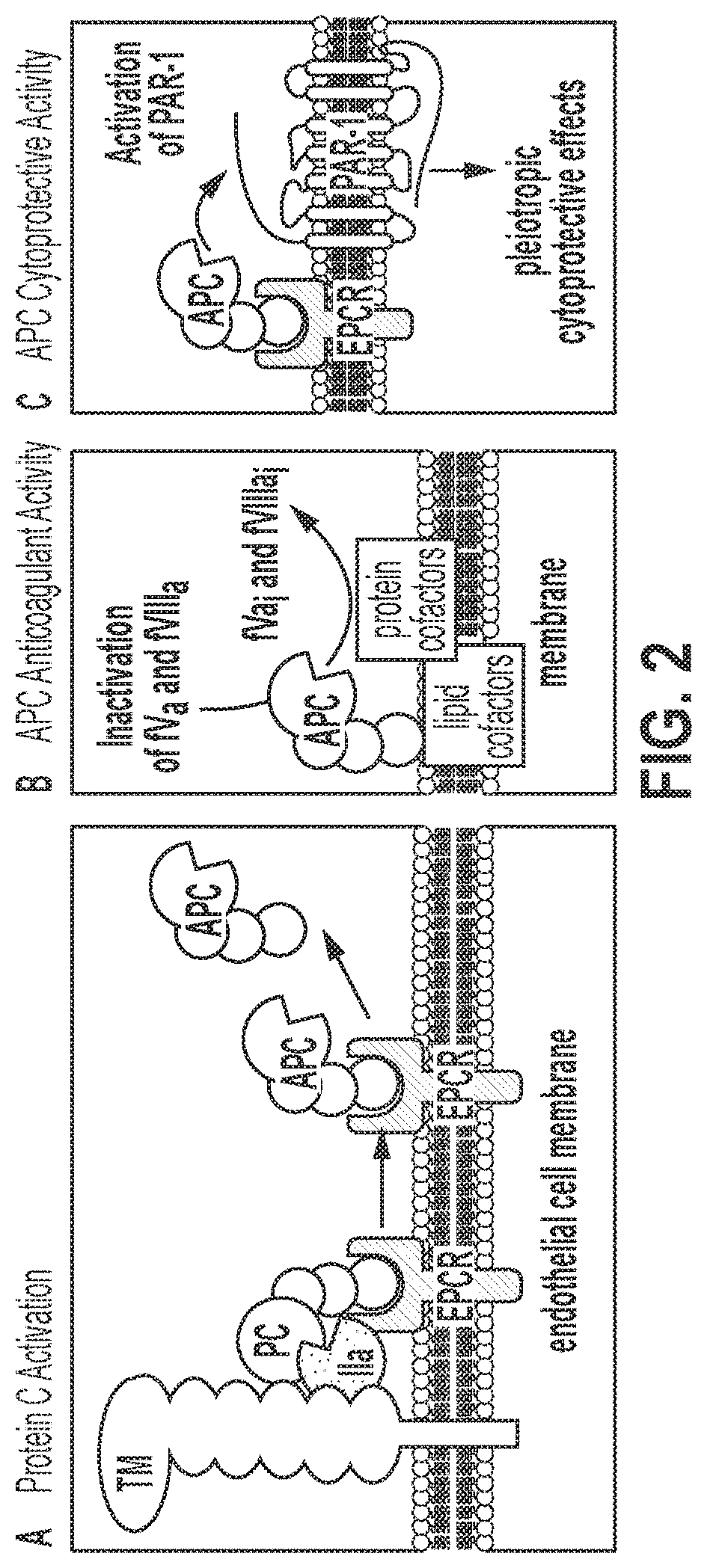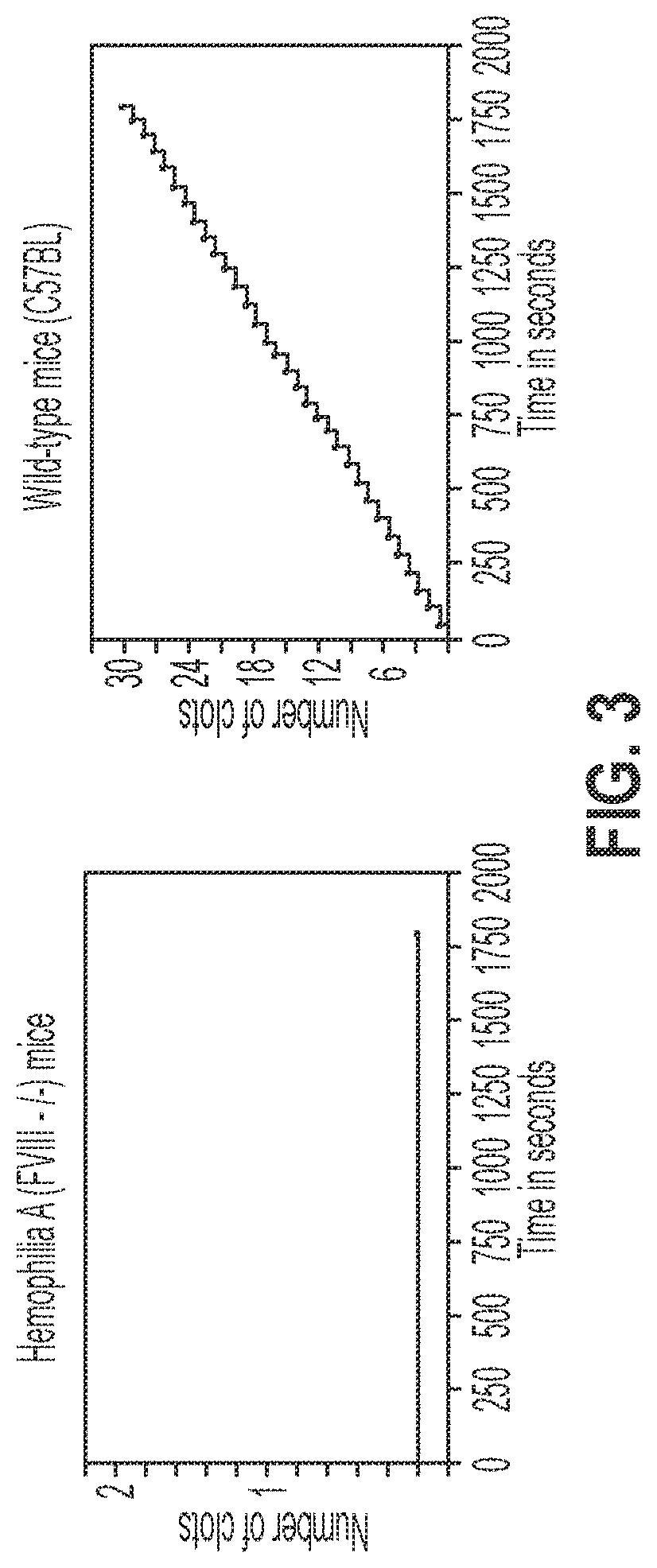Treatment and prevention of hemophilic arthropathy with an antibody against endothelial cell protein c receptor (EPCR)
- Summary
- Abstract
- Description
- Claims
- Application Information
AI Technical Summary
Benefits of technology
Problems solved by technology
Method used
Image
Examples
example i
Materials and Methods
Mice
[0104]Wild-type (WT) mice of the C57BL / 6J (B6) strain were obtained from Jackson Laboratories (Bar Harbor, Me.) as were FVIII− / − in B6×129 mice. The latter strain had backcrossed B6 mice for more than 10 generations to generate FVIII− / − mice on the B6 genetic background.
Antibody-Induced Hemophilia:
[0105]B6 mice were administered FVIII Ab (1 mg / kg) one to two hours prior to inducing bleeding. The antibody neutralizes 90 to 95% of FVIII clotting activity and induces a hemophilic condition. See: Keshava et al., “Factor VIIa interaction with EPCR modulates the hemostatic effect of rFVIIa in hemophilia therapy: Mode of its action. Blood Advances. 2017; 1(15):1206-14.
Hemarthrosis Study Design
[0106]The method is described by Hakobyan, N., et al. (2016) “Haemarthrosis model in mice: BSS—Bleeding Severity Score assessment system.”Haemophilia 22(5): 790-798. Needle puncture was used to induce hemarthrosis, in which a 30 gauge needle was inserted between the anterior p...
example ii
Correction of Bleeding in Hemophilia A Mice by EPCR Blocking mAb
[0127]Subjects were administered the doses of FVIIa and blocking anti-EPCR mAb as described above. The results shown in FIG. 7 indicate that a low dose of FVIIa corrects bleeding in hemophilia A mice when EPCR blocking mAb were also administered
example iii
Inactive FVIIa Enhances the Hemostatic Effect of Active FVIIa
[0128]Subjects were administered the doses of active and / or inactive FVIIa. The results shown in FIG. 8 indicate that higher doses of FVIIa reduced clotting time and blood loss in hemophilia A mice. When a dose of 10 mg / kg of inactive FVIIa was added to a dose of 1 mg / kg active FVIIa, the reduction in clotting time and in blood loss were greater than with either agent alone.
PUM
| Property | Measurement | Unit |
|---|---|---|
| Composition | aaaaa | aaaaa |
| Swelling volume | aaaaa | aaaaa |
Abstract
Description
Claims
Application Information
 Login to View More
Login to View More - R&D
- Intellectual Property
- Life Sciences
- Materials
- Tech Scout
- Unparalleled Data Quality
- Higher Quality Content
- 60% Fewer Hallucinations
Browse by: Latest US Patents, China's latest patents, Technical Efficacy Thesaurus, Application Domain, Technology Topic, Popular Technical Reports.
© 2025 PatSnap. All rights reserved.Legal|Privacy policy|Modern Slavery Act Transparency Statement|Sitemap|About US| Contact US: help@patsnap.com



